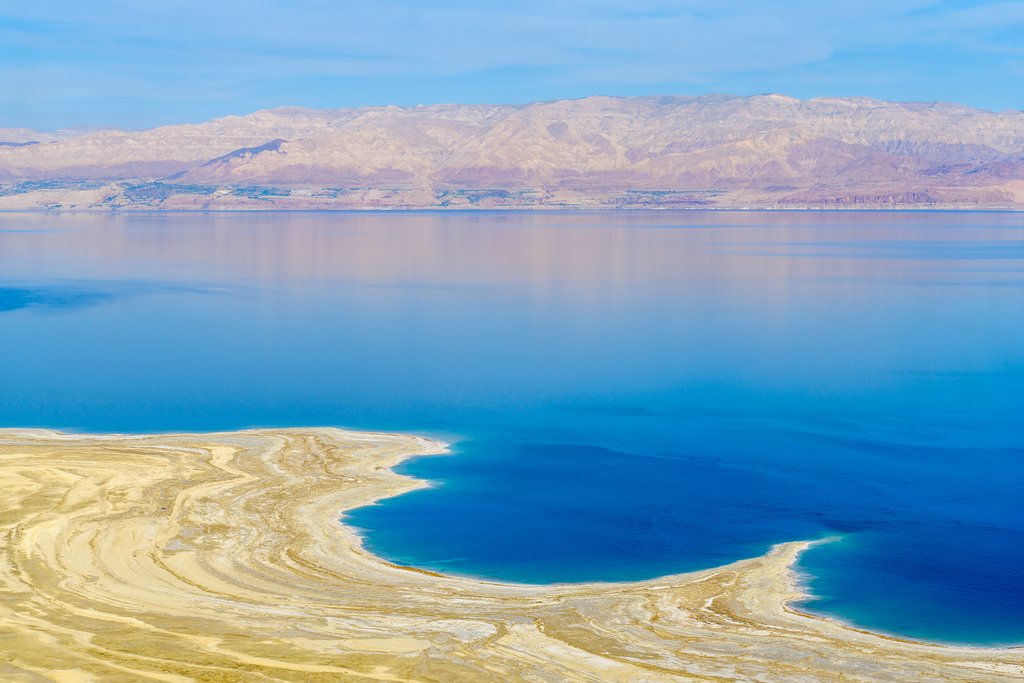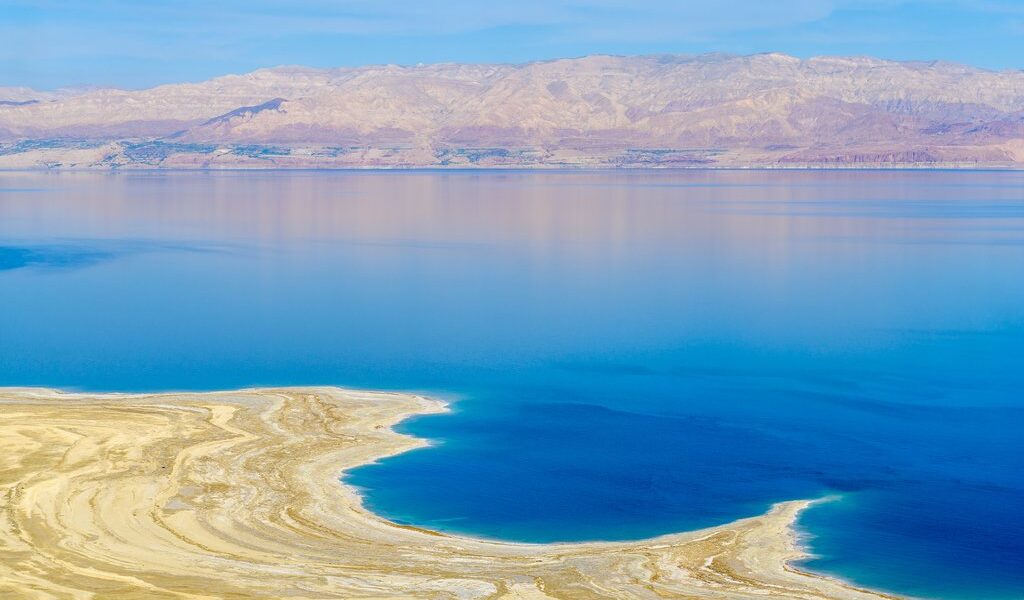
November marks the approach of winter, with Amman and higher elevation tourist sites increasingly cold. The rainy season also begins at the end of November and continues through March. But Aqaba feels still like a perpetual summer, the Dead Sea is bathtub warm, there’s great hiking throughout the country, and no end of cultural activities.
November in Jordan brings with it a palpable shift in the weather, a transition from the pleasant warmth of autumn towards the cooler embrace of winter. As the days shorten and the sun dips lower in the sky, temperatures begin a noticeable descent, and the likelihood of rainfall increases. This marks a distinct change in the landscape, particularly at higher altitudes, where the air carries a crisp, invigorating chill, especially as night descends.
In Amman, a city perched at a considerable elevation of approximately 3,300 feet (1,000 meters), the average temperature in November hovers around a comfortable 57°F (14°C). However, it’s important to note the daily temperature range, which typically fluctuates between a cooler 48°F (9°C) and a warmer 70°F (21°C). As November unfolds, the region begins to experience the first gusts of winter winds, which sweep through the valleys, adding to the overall sense of a seasonal change. Interestingly, Petra, the iconic ancient city carved into sandstone cliffs, experiences average temperatures in November that are generally similar to those found in Amman.
However, the climate narrative takes a different turn as we venture towards Aqaba, nestled on the coast. This port city enjoys a distinctly warmer climate compared to other parts of Jordan during this time of year. In fact, Aqaba boasts an average temperature of around 81°F (27°C) throughout the month of November, making it an attractive destination for those seeking respite from the cooler weather prevailing elsewhere. The eastern desert regions also retain warmth during the daytime hours, providing pleasant conditions for exploration. However, travelers should be aware that desert nights can bring significantly colder temperatures, requiring appropriate layering of clothing. The Gulf of Aqaba maintains a balmy water temperature, averaging around 79°F (26°C), making it an ideal time for engaging in water activities, particularly scuba diving. The clear, warm waters offer exceptional visibility and a comfortable experience for divers of all levels.
When packing for a trip to Jordan in November, it’s essential to prepare for a range of weather conditions. Cold-weather clothing, such as sweaters, jackets, and scarves, is a must, particularly for evenings and visits to higher-altitude locations. However, it’s also wise to include lighter summer clothing for the warmer, sunny days that still occur. Don’t forget essentials such as sun lotion, a shade hat, and sunglasses to protect yourself from the sun’s rays. Comfortable and sturdy walking shoes are also crucial, as you’ll likely be doing a considerable amount of walking and exploring, particularly in historical sites like Petra and Wadi Rum.
Despite the increasingly cool weather, November remains a popular time to visit Jordan, and visitor numbers remain high. This is particularly true in early November, when many tourists seek to experience the country’s attractions before the onset of the colder winter months. As a result, expect popular tourist sites to be fairly crowded, particularly in the early part of the month. Airfares also tend to be at their most expensive during this period, as demand for flights to Jordan remains strong. To secure the best deals on flights and accommodations, it’s highly advisable to book well in advance, especially if you plan to travel in early November or visit the main tourist areas.
Jordan offers a wealth of experiences, catering to diverse interests and preferences. One notable destination is Ma’in Hot Springs, located approximately 45 miles (75 kilometers) south of Amman. These thermal mineral springs and waterfalls, known as Hammamat Ma’in, have a rich history, referenced in the Bible and legendarily attracting Herod for their medicinal properties. Visitors can immerse themselves in the mineral-rich pools, each offering a different temperature, nestled at the base of cascading waterfalls within a lush canyon paradise. The location, situated in the hills above the Dead Sea at 866 feet (264 meters) below sea level, adds to the unique appeal of this rejuvenating destination.
Aqaba, along with the Gulf of Aqaba, presents another compelling destination, especially for those seeking warmth and sunshine. Enjoying the warmest weather in Jordan, Aqaba provides ample opportunities for soaking up the sun’s rays. Culture enthusiasts will find much to explore, including the Aqaba Archaeological Museum, the stunning Sherif al-Hussein bin Ali Mosque, and the Mamluk Castle, a site of historical significance during World War I, famously depicted in David Lean’s 1962 film, Lawrence of Arabia. The Red Sea’s northern tip boasts diverse marine life for underwater adventures.
For those with a passion for history, particularly Biblical history, a hike to Machaerus is highly recommended. This hilltop stronghold, once the palace and fortress of Herod the Great, dates back to around 90 BC, predating Herod’s reign. Situated at approximately 3,300 feet (1,100 meters) in the eastern hills overlooking the Dead Sea, the now-ruined site was naturally protected by deep ravines on three sides. According to biblical legend, John the Baptist was imprisoned and beheaded here by Herod Antipas, son of Herod the Great. Appropriately, the site is known locally as Qala’at Al Meshneq, meaning “Castle of the Gallows.” Visitors can also discern the location of Herod Antipas’ palace, where Salome is said to have danced, and, on the western side of the hill, the remains of a siege ramp constructed by the Romans in AD 72 to capture the fort. A visit to Machaerus can be conveniently combined with a trip to Ma’in Hot Springs, which is located nearby.
National Geographic has recognized the 50-mile (80-kilometer) trek from Dana to Petra as one of the world’s top hikes. This challenging journey traverses ruggedly beautiful desert and mountain landscapes, beginning in the Dana Biosphere Reserve, crossing the vast arid expanse of Wadi Araba, and ascending into the Sharah Mountains before culminating at Petra through its lesser-known back entrance.
Bird enthusiasts will find paradise at the Aqaba Bird Observatory, located at the northern tip of the Red Sea. This haven for bird-watchers features a mosaic of forest and artificially created wetlands, creating a lush contrast to the surrounding harsh desert environment. In November, the observatory attracts vast flocks of migratory birds traveling between Europe, Africa, and Asia. A significant portion of Jordan’s approximately 390 bird species can be observed here, making this one of the best times of year for bird spotting.
The clear sunlight and crystal-clear air of November create ideal conditions for photography. Wadi Rum, with its spectacular kaleidoscope of color and texture, offers a wealth of photographic opportunities. Capture the captivating dune lines, undulations, and fantastical geological formations, all enhanced by the interplay of light and shadows. The cooler months allow for extended periods of outdoor shooting, and the best times for capturing the most vibrant colors are typically during the hour after sunrise and the hour before sunset, when the light is warm and golden.
One significant event that may occur in November is Mawlid or Mawlid al-Nabi al-Sharif, the celebration of the birthday of the Islamic prophet Muhammad. Observed in the third month of the Islamic calendar, festivities typically include feasts, singing, and poetry readings. These provide an immersion into local culture.
That concludes our comprehensive guide of what you can expect when travelling to Jordan in November.
B-1475

